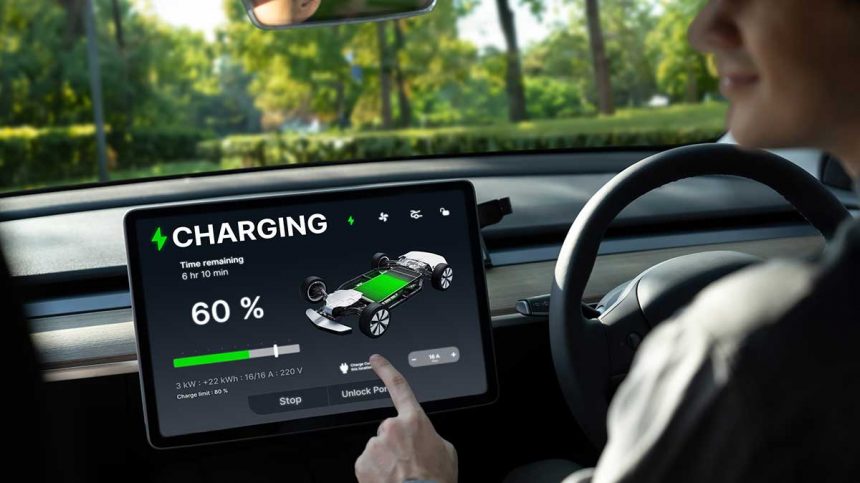
One of the common concerns among potential electric vehicle (EV) buyers is range anxiety, the fear that an electric car may run out of charge before reaching its destination or a charging station. However, the latest models for 2024 and 2025 are addressing these fears by offering impressive driving ranges. Hybrid vehicles, in particular, are leading the way with extended ranges, bridging the gap between traditional and future automotive technologies.
The Environmental Protection Agency (EPA) states that transportation is the largest source of greenhouse gas emissions in the U.S., mainly due to internal combustion engines. Overcoming range anxiety has been a significant hurdle in the adoption of electric vehicles, despite most trips in the U.S. being less than 30 miles.
Advancements in battery technology and electric motor efficiency have allowed EVs to compete with gasoline-powered vehicles in terms of driving ranges. For example, the Lucid Air can travel up to 516 miles on a single charge, while the Tesla Model S offers 405 miles. These ranges are comparable to, and in some cases exceed, those of traditional gasoline vehicles. The Toyota Camry, for instance, boasts a range of approximately 550 miles per tank, a figure that top EVs are approaching.
However, despite these technological advancements, some consumers still seek added reassurance for long-distance travel. This demand is reflected in the growing market for hybrid vehicles, which combine gasoline engines with electric motors to offer extended range and reduced emissions. Models like the Toyota RAV4 Hybrid, capable of traveling around 580 miles per tank, provide a middle ground for those hesitant to fully transition to electric vehicles.
Environmental Impact of Electric, Hybrid, and Internal Combustion Engines
The environmental impact of a vehicle is a significant consideration for many buyers, especially those contemplating a switch from internal combustion engines (ICE) to electric or hybrid options. While pure EVs offer zero tailpipe emissions, the production of batteries, particularly the mining of lithium, cobalt, and nickel, poses environmental challenges that cannot be overlooked.
Hybrid vehicles, on the other hand, significantly reduce emissions compared to ICE vehicles. They benefit from regenerative braking and the ability to run on electric power at low speeds, resulting in lower fuel consumption and emissions. The Toyota Prius, for example, has long been praised for its environmental advantages, offering a practical solution for those seeking to reduce their carbon footprint without sacrificing range.
While internal combustion engines are becoming more efficient, they still contribute more CO2 and volatile organic compounds to greenhouse gas emissions compared to EVs and hybrids. The competition from EVs is pushing automakers to enhance the fuel efficiency of gasoline vehicles, but they cannot match the environmental benefits of electric alternatives.
Comparison of Ranges: Gasoline vs. Electric Vehicles
A comparison of the driving ranges of top gasoline and electric vehicles reveals a narrowing gap. This table shows the diminishing difference in driving distances between ICE and EV/Hybrid vehicles.
| Rank | Gasoline Vehicle | Range (miles) | Electric Vehicle | Range (miles) |
|---|---|---|---|---|
| 1 | Toyota Camry | 550 | Lucid Air | 516 |
| 2 | Honda CR-V | 450 | Tesla Model 3 | 341 |
| 3 | Chevrolet Silverado | 500 | Tesla Model Y | 330 |
| 4 | Ram 1500 | 480 | Rivian R1S | 352 |
| 5 | Toyota RAV4 | 420 | Fisker Ocean | 360 |
| 6 | Ford F-150 | 480 | BMW i4 | 307 |
| 7 | Jeep Grand Cherokee | 450 | Hyundai IONIQ 5 | 303 |
| 8 | GMC Sierra | 470 | Mercedes-Benz EQS | 350 |
| 9 | Nissan Rogue | 430 | Volkswagen ID.4 | 275 |
| 10 | Honda Civic | 490 | Ford Mustang Mach-E | 305 |
| 11 | Toyota Corolla | 430 | Chevrolet Bolt EUV | 247 |
| 12 | Chevrolet Equinox | 400 | Audi Q4 e-tron | 291 |
| 13 | Jeep Wrangler | 400 | Tesla Cybertruck | ~300 |
| 14 | Ford Explorer | 430 | Nissan Leaf | 226 |
| 15 | Subaru Forester | 450 | Kia EV6 | 310 |
Looking Ahead to 2024 and Beyond
The automotive industry is progressing towards greater electrification in the coming years. The availability of EVs with extended ranges is alleviating range anxiety, while the popularity of hybrids continues to provide a transition option for consumers uncertain about fully electric vehicles. Despite this, the shift towards pure electric cars remains the most promising route for substantial environmental benefits. When making your next vehicle purchase, consider these alternatives.
Automakers are heavily investing in battery technology to reduce the environmental impact of production and enhance energy density and range. Future model years are expected to bring further improvements, making EVs even more appealing to a wider audience.
. If the provided articles seems to be less than 200 characters or it is an intro of the author, then try to generate an articles using this title.Overcoming Range Anxiety: EVs And Hybrids Offer Long-Distance Travel






